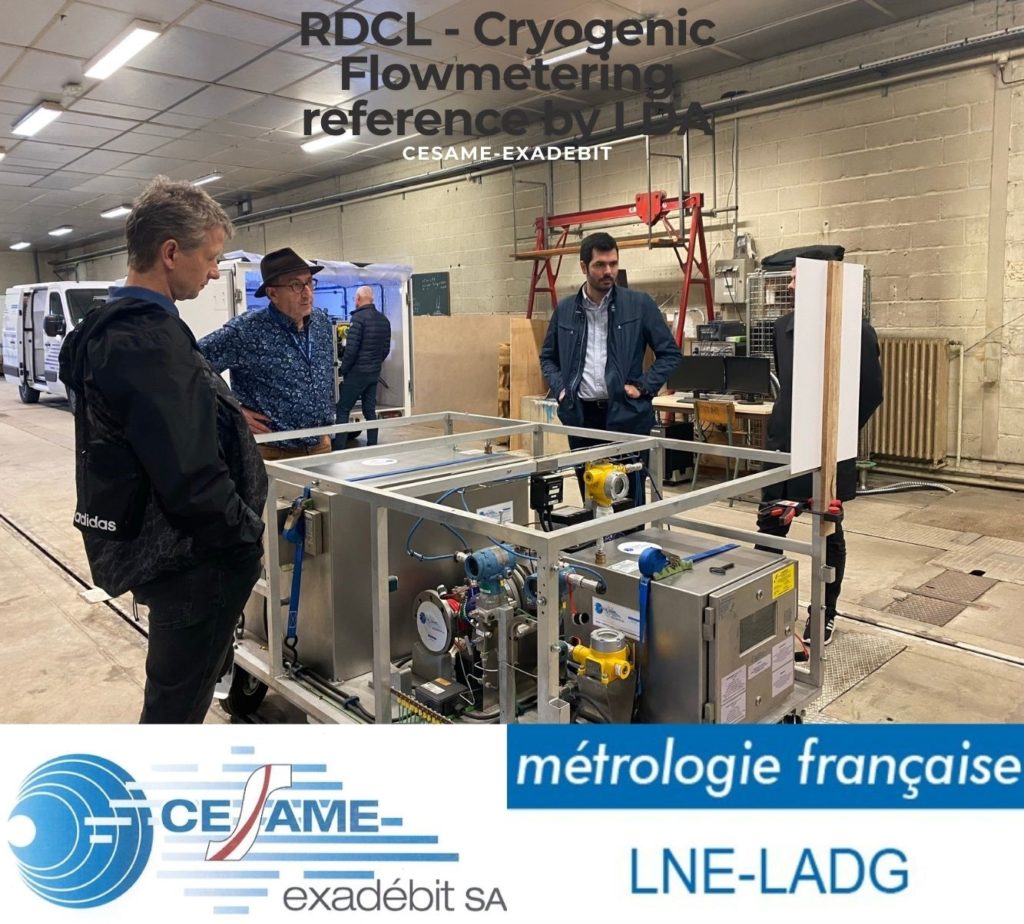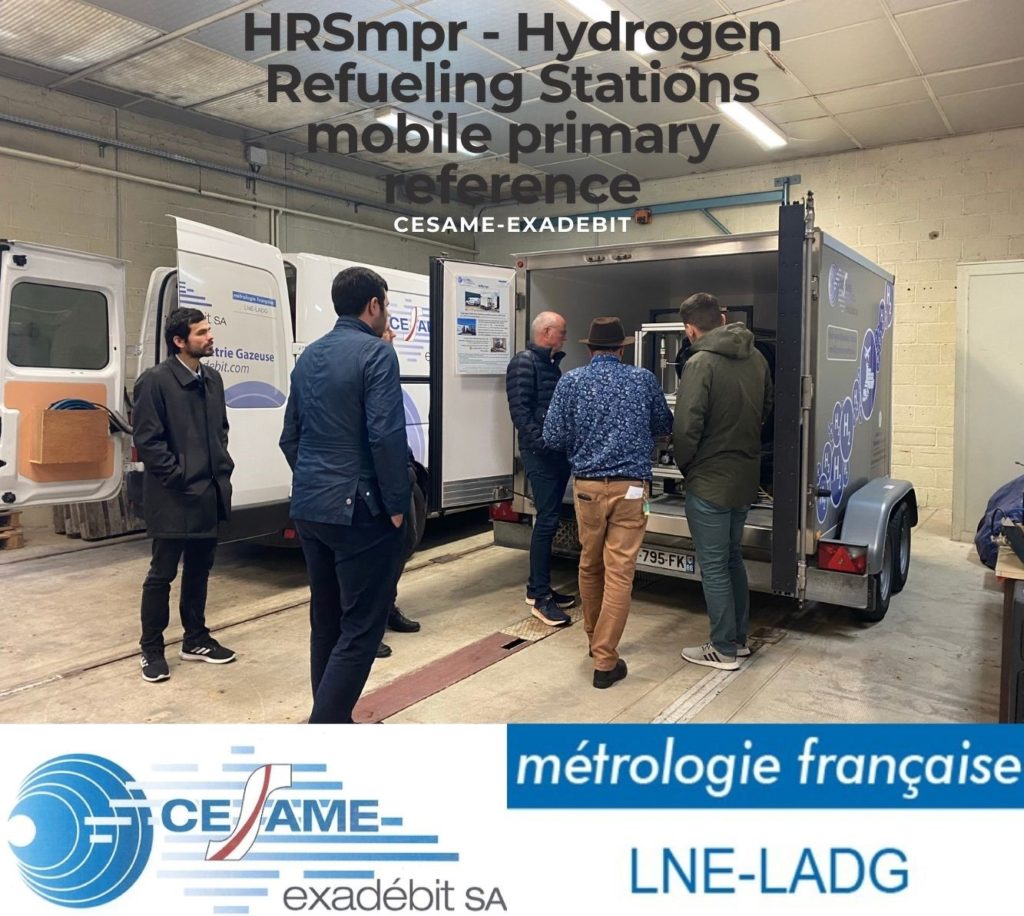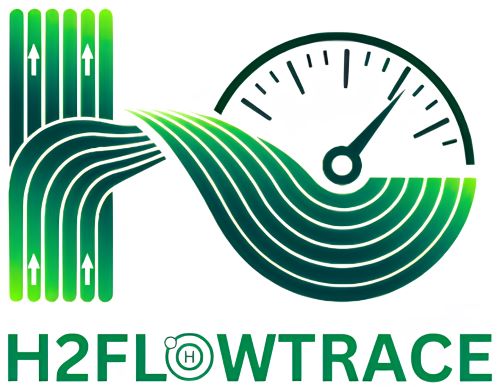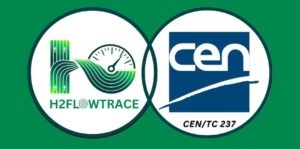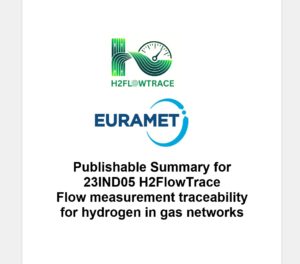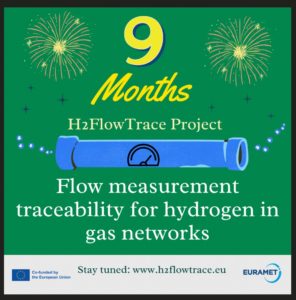
On 8th October 2024, the H2FlowTrace project consortium gathered in the historical city of Poitiers, France, for the official kick-off of the project. The meeting was hosted by Cesame Exadebit, the project coordinator in its premises.
During the encounter, the project participants outlined the planned activities for the coming years, with several presentations, technical discussions and workshops covering, among others, the design of the transfer skids that will be used to provide traceability for pure hydrogen and hydrogen/natural gas blends.
More specifically, in Work Package 1 led by METAS, participants presented already significant progress on the definition of the main characteristics for the sonic critical flow venturi nozzles (CFVN) that will be used for pure hydrogen traceability. The plans cover traceability for both low and medium flow rates.
In Work Package 2, led by PTB, the aim is to develop a metrological infrastructure for measuring pure hydrogen and Hydrogen Enriched Natural Gas (HENG) at high flow rates (200 m3/h to 10 000 m3/h). Participants talked about the testing facilities for this purpose, which would also be part of an intercomparison.

Similarly, in Work Package 3, led by VSL, the design of the small scale transfer skids (SSTS) and large scale transfer skids (LSTS) was discussed, considering that this metrological infrastructure will be key to provide traceability for hydrogen and hydrogen blends in the future.
Work Package 4, led by NEL, will evaluate domestic and industrial gas meters, in order to strengthen the traceability of the facilities used. The importance of interacting with stakeholders was emphasized, to determine the best practice for the calibration of flow meters and to ensure future exploitation.
Work Packages 5 on impact and 6 on management, led by GERG and Cesame respectively, were also presented ensuring that their activities and required deliverables will be produced on time and according to plan. The dissemination of project results and outcomes will be promoted throughout the project, via a dedicated stakeholder committee, participation in events, the project LinkedIn account, among others.
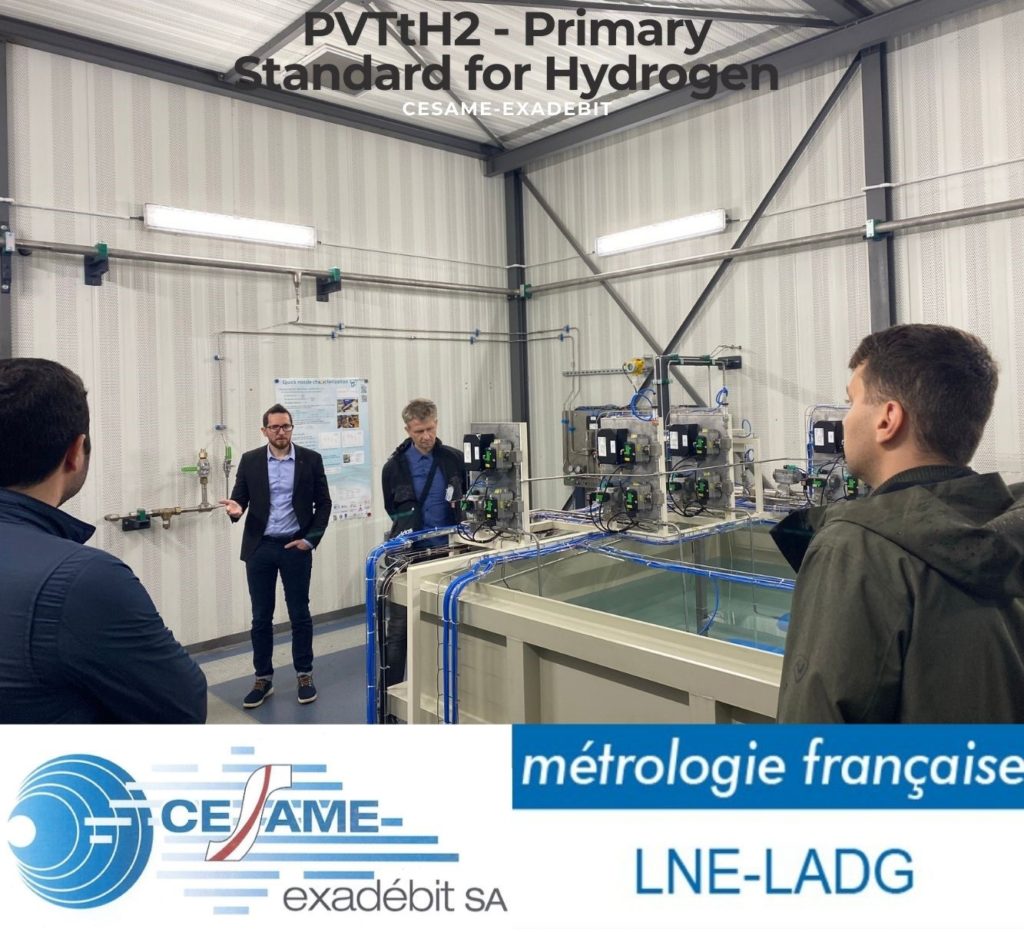
Last but not least, the H2FlowTrace consortium had the opportunity to follow a lab tour and learn about some of the facilities that will be used during the project and gain additional knowledge on gas flow metering, such as the calibration and legal verification of different types of flow meters. The visited facilities included:
- The Hydrogen Refuelling Station Mobile Primary Reference (HRSmpr) which is used for verification of the accuracy of the mass of hydrogen delivered to vehicles.
- The cryogenic Flow Metering Reference by LDA (RDCL), a prototype developed in the framework of previous Euramet JRPs LNG 1, 2 and 3, which is an alternative to the state-of-the-art static volume measurements for Liquid Natural Gas (LNG) custody transfer processes.
- Primary Standard for Hydrogen, PVTtH2. A test bench used for calibration of sonic nozzles under various fluids.
